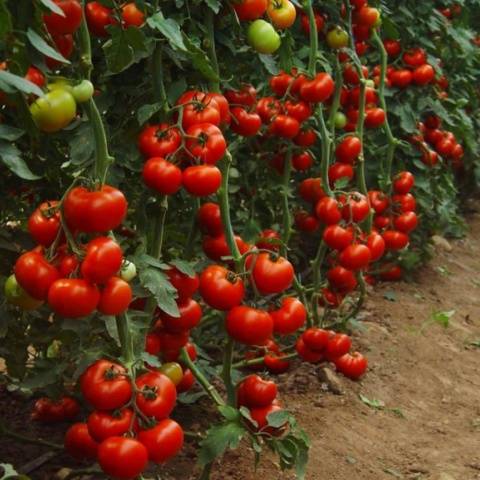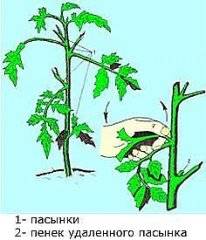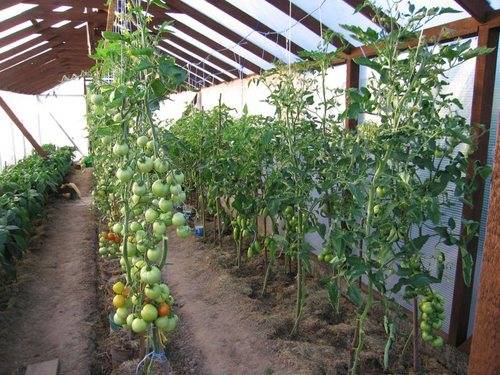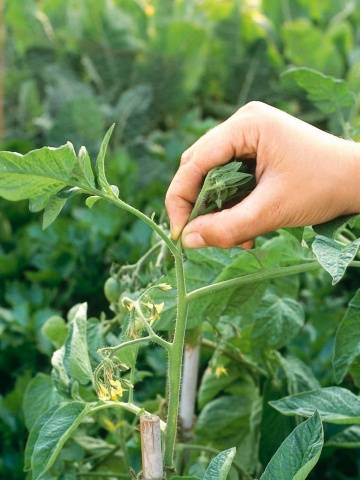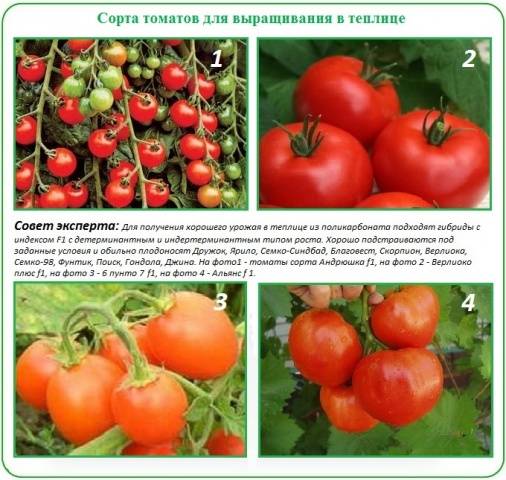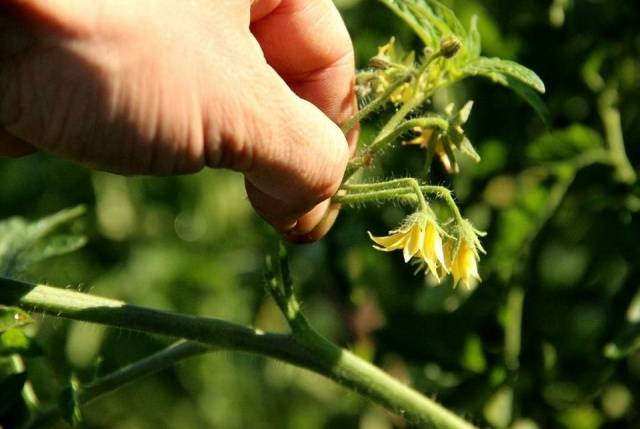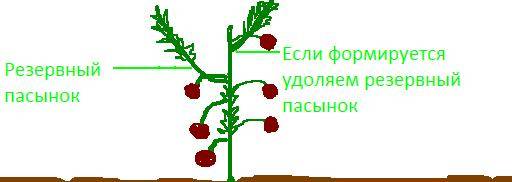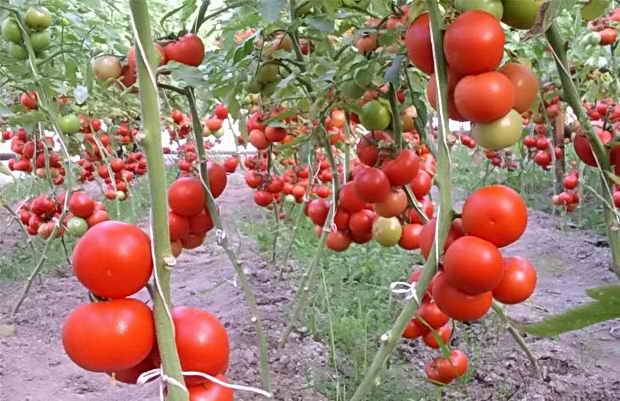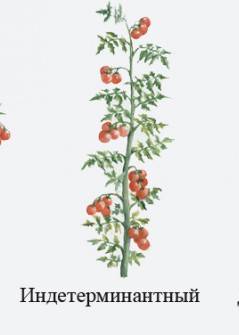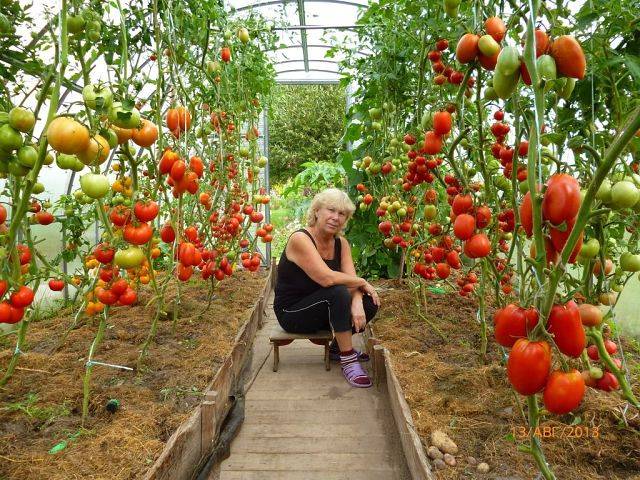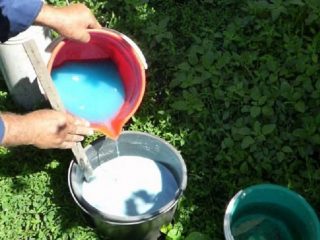Content
The greenhouse owners try to use every centimeter of its area to grow the maximum yield. And this is understandable - in most regions of our country, summer is short and does not spoil with warmth. In order to grow a lot of tomatoes, you need to follow all the rules of agricultural technology. Gardeners water and feed the plants, and they do not always take care of the formation of a tomato. The sad result of such inattention is the tomato jungle and, despite all the efforts, a small harvest. So that the work does not go to waste, let's take a closer look at this agrotechnical technique.
The formation of tomatoes in a greenhouse involves several operations, each of which cannot be neglected. Only done on time and in full, they will provide the result that every gardener hopes for: a wall of ripe tomatoes in a greenhouse.
Stages of the formation of tomato bushes
The correct formation of a tomato bush in a greenhouse consists of several techniques
- pinching;
- removing leaves below a fully formed brush or lightening a bush;
- pinching the tops of tomato bushes.
Stepping
The most time-consuming and time-consuming procedure is pinching a tomato in a greenhouse. Sometimes budding gardeners regret these extra shoots, which look powerful and strong. It seems that they will give the same harvest. But the stepchildren give a flower cluster 10 days later than the main stem, therefore, they delay the formation of fruits and the ripening of the crop. And when every day is important for the development of a tomato, this is an unforgivable luxury. The nutrients spent on their growth and development will be taken away from the main stem, weakening it.
Stepping starts when the stepson reaches a length of 4-5 cm and continues throughout the growing season for growing tomatoes in a greenhouse. This must be done constantly at regular intervals, not allowing the stepsons to outgrow.
A correctly removed stepson should leave behind a stump from 1 to 3 cm in height. Then there will be no more stepsons in this growth bosom. To prevent a possible disease of tomatoes, pinching of tomatoes in a greenhouse is carried out in the morning on not wet tomato bushes, starting with the healthiest and strongest. Bushes doubtful about the disease are the last to go. This is necessary so as not to provoke the possible spread of a fungal infection, for example, phytophthora.
The necessary technique is the disinfection of the instrument, which is used for pinching in a disinfectant solution. Most often, a concentrated solution of potassium permanganate acts in this capacity. If work is carried out with gloved hands, they should also be disinfected.
Stepping a tomato in a greenhouse is shown in the video:
Lightening bushes
This is an important technique for better ventilation of the space under the bushes. It is carried out as many times as brushes are formed on a tomato bush.Remove the leaves under each brush that has formed the fruit of the desired size and has begun to sing. The leaves that nourished it are no longer needed by the plant.
Pinching or poking
The pinching of tomatoes in the greenhouse is carried out a month before the establishment of cold weather, so that the rest of the fruits on the bush have time to ripen. To do this, remove the top of the shoot, leaving 2-3 leaves to feed the previous brush. In each region, the term for the movement is different. If the autumn is long and warm, the tomatoes that have reached the top of the greenhouse can not be pinched, but, throwing them over the upper trellis, gradually lower them down, observing an angle of 45 degrees.
Choosing a tomato variety for a greenhouse
There are several types of tomato bushes, which differ in the strength of growth, its continuity and yield.
- Indeterminate varieties do not have restrictions in growth, only the onset of cold weather stops it. They are prone to the formation of a large number of stepchildren. The distance between adjacent clusters is quite large and can reach 30 cm. Theoretically, such tomatoes can grow up to 4 m and give up to 40 fruit clusters.
- Semi-determinant varieties... The maximum number of brushes on such tomatoes is 12, after which their growth stops. The main advantage of such tomatoes is a small distance between adjacent clusters, a maximum of 18 cm, which allows them to harvest a good harvest from them. This type of tomato gives a lot of stepsons.
- Determinant varieties... As a rule, they are not tall, they do not form more than 7 brushes on the main stem, further the growth of such a bush in height ends. The number of stepchildren is moderate.
- Superdeterminants and standard varieties... They are distinguished by their small height and a small number of brushes on the central shoot. The harvest is early, but small. There are few stepsons.
To use the greenhouse to the maximum, it is better to give preference to the first two groups of tomatoes, which have many varieties and hybrids that give an excellent yield of fruits of high taste.
The formation of each group of tomatoes has its own characteristics.
Semi-determinant varieties and hybrids are usually medium-sized. In terms of ripening, they are most often mid-season and late. But there are many early ones. The modern assortment of varieties and hybrids often baffles the novice gardener. To decide, you need to know well for what purposes tomatoes are planted.
Large-fruited varieties with a rich, bright tomato flavor are suitable for fresh consumption. Among them there are giants that bear fruit up to 1 kg or more. This tomato is enough to feed an entire family. For canning, hybrids are more suitable, they are characterized by increased productivity, fruit evenness, resistance to diseases, but they often lose to varieties in taste.
Semi-determinant varieties
The cultivation of semi-determinant varieties in a greenhouse and the formation of their bush has its own characteristics. This type of tomato, if not properly cared for, can end prematurely and not reach its full potential. Prolonged cloudy or cold weather can also lead to such a result, which worsens the conditions for the development of half-days. Semi-dominant varieties tend to overload crops. Therefore, its regulation is an important part of the formation of a bush of such tomatoes in the greenhouse. A large load of fruits can also provoke premature edging.
In order to prevent this from happening, on the first set of the brush, part of the fruits is removed, leaving no more than 4, especially for deformed fruits. Do the same with the second brush. If the size of the fruit is large, the number can be reduced to 2.
For this type of tomato, you need to provide a backup stepson, which will be a continuation of the shoot when the plant is prematurely crowned. Another feature of this type of tomato is that on the first brush the tomatoes are small and underdeveloped, especially if the seedlings that have not yet been planted are blooming.
It is very important to ensure that there are enough leaves so that the plant has enough strength to feed all the fruits that have formed, especially when it is dry and sunny. There should be no less than 20 leaves on a semi-determinate tomato bush. For other types of tomatoes, this amount is less.
When pinching tomatoes For this type of greenhouse growth, leave 2 extra leaves in the barren stepson to increase the number of leaves.
Semi-determinant tomatoes need enhanced, balanced nutrition and sufficient watering, especially when fruit is being poured. They can be formed as follows.
- One stem. A sufficient number of brushes on it will give a significant harvest. To be on the safe side in case of premature edging, always leave a backup stepson under the newly forming brush. If the bush grows safely further and forms the next brush, then the backup stepson will already be under it, and the one that was left earlier must be removed by pinching it on 2 sheets.
All other stepchildren are removed by stepson the tomatoes as usual. The pinching of the tops of semi-determinate tomatoes in the greenhouse is carried out one month before the onset of cold weather. It is carried out, leaving 2 sheets after the upper brush. - With the transfer of the growth point to the stepson after the formation of up to 3 brushes on the main stem. The strongest stepson is chosen as the continuation escape. After the formation of 3 brushes on it, it is also pinched, forming a continuation shoot from a new stepson. More than nine brushes are left only on strong plants with obviously high yields. All other stepchildren on the bush must be removed.
- Pinch the top of the main shoot after the 6th brush, leaving a continuation as an escape, the stepson after 4-5 brushes. It continues to form throughout the entire period of plant growth.
Way the formation of determinant tomatoes is selected according to the variety and condition of the plant. Details on the formation of tomatoes in the greenhouse are shown in the video.
Indeterminate tomato varieties
These varieties are most often chosen by gardeners for planting both in conventional greenhouses and in polycarbonate greenhouses.
Such tomatoes are easier to care for, the formation of tomatoes in the greenhouse, if the varieties indeterminate is also not difficult. Most often, the Indets lead to 1 stem, completely removing all stepchildren.
For some varieties, it is possible to form 2 stems, of which the stepson will be the second under the first flower brush. Caring for tomatoes is simple. In the greenhouse, the scheme for the formation of tomatoes in one stem looks like this:
And this is the scheme brought to life:
How to pinch indeterminate tomatoes in a greenhouse correctly can be seen in the video:
Two stepchildren that will grow out of the leaf axils will form two trunks in mature plants.
Outcomes
Tomatoes in a greenhouse require more than just proper care. It is very important to carry out all the operations to form a tomato bush, then the harvest will not be long in coming.
